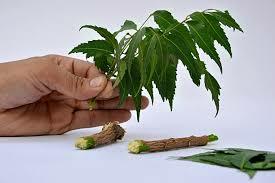Notifications
ALL BUSINESS
COMIDA
DIRECTORIES
ENTERTAINMENT
FINER THINGS
HEALTH
MARKETPLACE
MEMBER's ONLY
MONEY MATTER$
MOTIVATIONAL
NEWS & WEATHER
TECHNOLOGIA
TV NETWORKS
VIDEOS
VOTE USA 2026/2028
INVESTOR RELATIONS
DEV FOR 2025 / 2026
ALL BUSINESS
COMIDA
DIRECTORIES
ENTERTAINMENT
FINER THINGS
HEALTH
MARKETPLACE
MEMBER's ONLY
MONEY MATTER$
MOTIVATIONAL
NEWS & WEATHER
TECHNOLOGIA
TV NETWORKS
VIDEOS
VOTE USA 2026/2028
INVESTOR RELATIONS
DEV FOR 2025 / 2026
 rahul patel -
Apr 9 -
Other -
agriculture
farming
neemz
neem oil pesticide price
neem oil price
-
53 views -
0 Comments -
0 Likes -
0 Reviews
rahul patel -
Apr 9 -
Other -
agriculture
farming
neemz
neem oil pesticide price
neem oil price
-
53 views -
0 Comments -
0 Likes -
0 Reviews

In organic farming, planning is just as important as soil. Neem oil is an element that has earned a place in every natural grower's toolbox. Neem oil, which is extracted from the seeds of the Azadirachta indica neem tree, is a potent herb for microbial balance, plant health, and insect control. Aphid spraying is only one aspect of it, though. How you use it determines its true value, which is where these hacks are useful.
Neem oil has uses beyond insects. It has several functions in a flourishing organic garden, including seed preservation, fungus prevention, and root health. The secret is to recognize neem's adaptability and adjust its application to your garden's requirements. These neem oil tips will improve your growing experience whether you are using half an acre of food forest, raised beds, or balcony plants.
Before getting into the tricks, it helps to know why neem oil is unique. In the traditional sense, it is not poison. It functions by interfering with the hormone systems of insects, preventing reproduction, discouraging feeding, and essentially halting growth. When used properly, it kills pests, including aphids, whiteflies, mealybugs, thrips, and scales, while generally ignoring beneficial insects like ladybugs and bees.
Neem is an all-around protector for your plants because it includes anti-fungal and anti-bacterial compounds. Because of its safety, biodegradability, and efficacy, the organic gardening community has embraced it.
One of the standout options for those looking for a more efficient application method is Neemz - natural and water-soluble neem oil. Its unique formulation allows for better dispersion in water without requiring synthetic emulsifiers, making it easier to mix and more effective during foliar application. This is especially helpful during monsoon seasons or in humidity-prone gardens where fungal issues flare up.
Most gardeners wait for an infestation before reaching for neem oil. But neem works best as a preventive. Spray a diluted neem oil mix once a week to repel pests before they become a problem.
Mix 1 tablespoon of neem oil with 1 teaspoon of liquid soap in 1 liter of water.
Spray early in the morning or late evening to avoid sunburn and ensure beneficial insects aren't affected.
A weekly preventive routine builds plant resilience and keeps most common garden pests away before they can establish.
Pre-soaking seeds in a mild neem solution can reduce early-stage fungal infections. Soil-borne pathogens like Pythium and Fusarium often target germinating seeds, causing damping-off disease.
To avoid this, soak seeds in a diluted neem oil solution (1–2 ml per liter) for 2–3 hours before sowing. The coating not only protects seeds but also supports uniform sprouting.
Certain pests, such as nematodes and root maggots, target the soil beneath the surface. Here, a neem root drench will be more beneficial than a foliar spray. To combat pests that live in the soil, apply a solution of neem oil and water directly to the base of plants.
This also enhances the health of the soil by keeping helpful bacteria alive while suppressing detrimental ones. It is very helpful for cucurbits, brinjals, and tomatoes that are susceptible to root infections.
Neem oil works even better when paired with pest-repelling companion plants. Basil, marigold, and lemongrass emit volatile oils that drive pests away. When combined with neem treatments, the protective barrier becomes much stronger and more complex for insects to overcome.
This layered defense reduces the chances of resistance development in pest populations, a significant concern in monoculture systems.
"The most resilient gardens aren’t the ones with the most sprays. They’re the ones with the best strategies."
Pests frequently flourish after a big downpour because of the increased humidity and removed barriers. Neem oil spraying 24 hours after a rainstorm aids in the rapid restoration of your plant's defenses.
This is particularly effective in tropical regions, where pests like leaf miners and whiteflies proliferate after rain. Even after dew or small showers, neem remains on leaves because of its mild stickiness.
Roses, beans, and cucurbits are susceptible to the quick spread of powdery mildew. Neem oil's fungicidal qualities prevent the germination of fungal spores.
Spray every five to seven days until the symptoms subside. To get the best effects, combine with enough air circulation and steer clear of overhead watering. Switch between water and baking soda sprays for more fungal control in extreme situations.
Dried neem leaves are a valuable fallback if neem oil isn't available. Soak neem leaves in water for 2–3 days, strain, and apply as a compost tea spray.
This mild tonic boosts plant immunity and introduces trace nutrients. It's instrumental in leafy greens and herbs that don’t respond well to stronger sprays.
According to Permaculture Research Institute, neem compost teas also improve microbial balance in compost piles, helping accelerate decomposition without attracting pests.
It is challenging to catch fruit borers in action. However, egg-laying can be avoided by spraying neem throughout the blossoming and early fruiting phases. The bitter substances in neem oil discourage moths from using plants as hosts.
When moths are most active, in the late evening, use neem. Regular neem spraying during reproductive stages can significantly reduce borer damage to crops like guava and okra.
By adding small amounts of sticky agents like aloe vera gel or castile soap, you can create a stickier neem spray that more effectively traps crawling pests like ants and aphids. The gel holds neem on the surface longer, increasing its contact time with pests.
This is especially handy in controlling ant populations that protect aphids and scale in exchange for honeydew.
Neem doesn’t stop working once the harvest is in. Mix neem oil with ash or dry sand to keep grains and legumes safe during storage. The scent and residue repel common storage pests like weevils and beetles.
Ensure neem-treated storage products are used only for non-edible seed stock or are cleaned thoroughly before cooking. This hack is handy for seed savers and farmers storing their produce long-term.
Neem oil is more than just an organic insecticide. Beyond controlling pests, it is a method, a way of thinking, and a way of caring for plants. It functions well because it is a component of a bigger system, one in which prevention is crucial, observation is essential, and gardeners are battling pests and sustaining life.
These are not merely short cuts. They are indicators of the evolution of organic gardening. Although neem oil has been used for many generations, modern growers are developing innovative ways to make it safer, more effective, and more intelligent. Therefore, do not assume spray when you see a bottle of neem. Consider possibilities. Consider resilience. Imagine creating a plant environment one leaf at a time.
